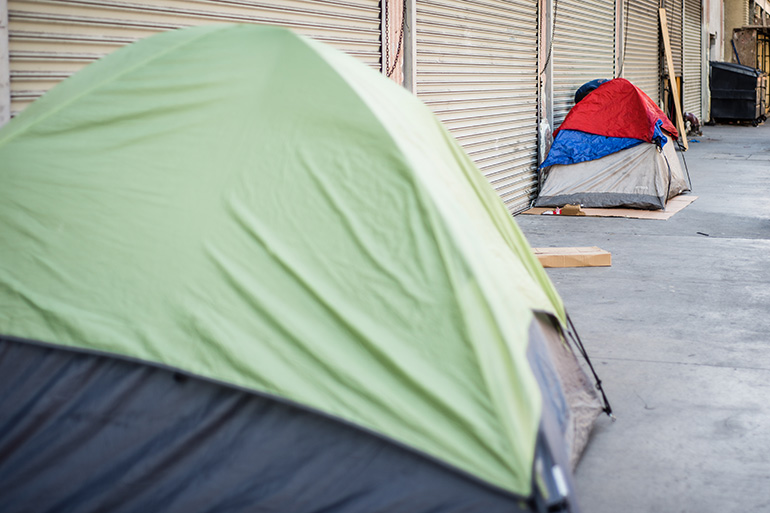Helping homeless Medi-Cal patients afford shelter could curb their frequent emergency room visits and save California millions of dollars a year, state housing and health care advocates say.
California lawmakers are considering a measure to devote an additional $90 million in state housing money over five years to subsidize rent for homeless Medi-Cal patients. That money would pay for all or part of the monthly rent for about 1,500 people at any given time during those years, say supporters of the bill.
“We know it’s the right thing to do to improve the health of this population, while also saving public costs,” says Sharon Rapport, associate director for California policy for the Corporation for Supportive Housing, which lobbies for affordable housing and finances development projects. The national non-profit is a co-sponsor of the bill.
Homeless people have trouble staying healthy for many reasons, including poor diet and sleep, advocates say. What’s more, people without homes often can’t safely store medications or get to doctor’s appointments.
But when homeless people find stable shelter, they can focus on getting well instead of focusing on survival, said Rapport.
Research shows homeless people are frequent users of emergency departments and have longer inpatient stays at the hospital. Other studies show sheltering them can reduce public health and other spending on social services.
It’s a phenomenon emergency physicians know all too well.
Dr. Aimee Moulin, an emergency physician with UC Davis Medical Center in Sacramento, said emergency doctors may treat homeless patients again and again but their power to improve the patients’ health is limited when they don’t have other basic needs met.
“If someone came in with a wound that required wound care, I don’t have reasonable expectation that they can do that if they don’t have housing,” said Moulin, president-elect of the California chapter of the American College of Emergency Physicians, which supported a similar measure last year. In some cases, Moulin said, she’ll admit patients to the hospital if she doubts they’ll be able to get the follow-up care they need.
“If you can start to address some of the underlying needs of patients, then you can actually make a better impact” on their health, Moulin said.
California has over one-third of the nation’s chronically homeless people, approximately 29,178 individuals as of 2015, according to the U.S. Department of Housing and Urban Development.
The housing funds would bolster a new Medi-Cal initiative to help homeless patients find housing. Since Medi-Cal cannot be used to directly help patients pay for housing, the bill’s funds would be used instead to subsidize their rent payments.
Using state housing money to house homeless patients would not only pay for itself by reducing hospital billing to Medi-Cal but would save the program an additional $6 million to 12 million a year, according to the Corporation for Supportive Housing.
The proposal has no registered opposition, but its biggest obstacle may be winning approval from Democratic Gov. Jerry Brown.
Last year, Brown called a similar legislative proposal “laudable” but vetoed it, saying proponents needed to work through his administration’s budget negotiation process. This year, advocates are working through both houses of the Legislature so the proposal will be included in upcoming budget negotiations.
Lawmakers are next expected to consider the bill at a May 26 Assembly Appropriations committee hearing.


